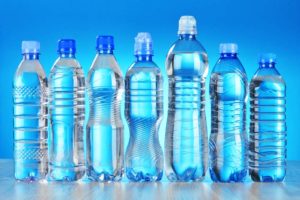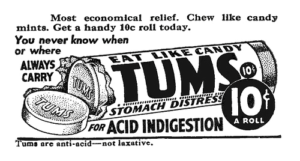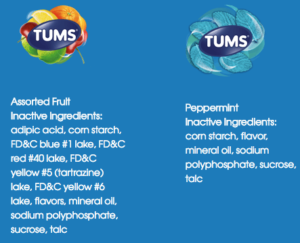Is society’s current understanding of the health effects of electromagnetic exposure parallel to society’s understanding in the 1970s of the health impacts of cigarette smoking? Decades ago, the tobacco companies created doubt and controversy about the proposed health risks of smoking; however, with more research and the passing of time, there is now evidence of several health risks associated with smoking. The mercury found in dental fillings has a similar history and continues to be analyzed by the medical community. The author encourages you to ponder whether or not electromagnetic exposure is following a similar path.
A position paper by The American Academy of Environmental Medicine calls into question the safety of cell phones and cell phone towers (known also as mobile phone base stations – MPBS), putting them in the same category as smoking and mercury.1 What is different about exposure to electromagnetic energy is that it has become fully integrated into our environment. If and when it is confirmed there is a health risk associated with electromagnetic exposure, will it be too late and what will be our options? As we become increasingly aware of the health risks posed by electromagnetic radiation, will we find solutions?
The result of the increase in public awareness and research is a growing concern about the safety of living near MPBSs. Several short term studies, ranging from several months to three years have concluded that there is no consistent evidence demonstrating associated risks of living near MPBSs, yet these results have led to an increased concern and the need for further investigation.2,3,10,14,15 For example, a study conducted by Shahbazi-Gahrouei et al. indicated that those individuals living a distance of greater than three hundred meters from an MPBS showed a statistically significant decrease in symptoms, such as nausea, headache, dizziness, irritability, discomfort, nervousness, depression, sleep disturbance, memory loss and lowering of libido compared to individuals that lived closer to MPBS.21 Some argue that distance is not a reliable measure because the power output of each MPBS can be different, leading to different distances at which they may impact health. Analyzing the health impact is further complicated by the fact that exposure at ground-level distance from different base stations may differ by four orders of magnitude because of base station parameters and environmental scattering,6 and there is a growing consensus that children are more susceptible to exposure, hence the emphasis on the placement of MPBSs away from daycares and schools.28
As naturopathic doctors (NDs) our focus is preventative health care and it is in our nature to look at the potential for risk and harm. The author proposes that NDs consider the long-term impacts to health, especially seeing as the current evidence suggesting the lack of long term health effects is primarily based on short-term studies. Limited evidence of harm does not mean that we should turn a blind eye and not proceed with further studies, particularly to our children’s health and the health of future generations.
Consider the growth of the mobile phone industry; in 1987, there were only 100,000 cell phones in Canada and by the end of 2010 there were more than 24 million. The increasing number of cell phones require more MPBSs to accommodate the volume of cell signals. A rise can be seen in MPBSs as well; in 2008 there were about 8,000 MPBSs29 and currently there are over 820,000 MPBSs in Canada.25 Mobile phone transmitter power-levels range from 0.6 to 2.0W, while MPBS transmitter power levels range from a few watts to >100W.6
MPBSs exist as either stand-alone structures (monopoles) or they can be on top of existing structures, such as churches, water tanks and other building types. Property owners have the option to rent out space on top of an existing structure to mobile-phone service providers. The height for coverage ranges from ten to one hundred meters. In many cases, the transmitter may go unnoticed. (see the link at the end of this article to find out if there is a MPBSs in your neighbourhood). As mobile-phones use rises, there is greater demand for coverage (signal availability and strength) and adequate capacity (number of channels)17. Companies may also co-locate on a structure,17 with two or three companies sharing a tower for their antennas.
Twenty-four studies since 1973 have identified adverse effects associated with exposure to non-thermal microwave electromagnetic radiation (EMR) or hypersensitivity (EMH).23 These effects include both neuropsychiatric symptoms16 and other generalized symptoms. Symptoms that are believed to be associated with EMR exposure range from various cancers, headaches, fatigue, decreased learning, ADD, autism spectrum disorder, decreased memory, hormone imbalances,20 infertility, dementia, autoimmune disease, diabetes and heart problems.4,5,8,11,16,23 Other data shows that children, women26 and the elderly27 are more susceptible to physical symptoms such as of tiredness, headaches, sleep disturbances, irritability, depression, loss of memory, dizziness, libido decrease, nausea and visual perturbations. Multiple chemical sensitivity has been associated with EMH.9
While the mechanism of action of low level electromagnetic radiation exposure is still to be determined and more studies are needed, there are a number of proposed mechanisms of action :
Increase in Intracellular Calcium: Martin Pall, Professor Emeritus of Biochemistry and Basic Medical Sciences at Washington State University, studies the influence on voltage across a cells plasma membrane. His research shows that the activation of the voltage-gate calcium channels7 leads to an increase in intracellular calcium,7,8 causing the release of neurotransmitters and hormones.23 Pall’s research shows that the nervous system is sensitive to MPBS proximity. Research shows that the Increased intracellular calcium also stimulates osteoblasts and bone growth.7 This rise of intracellular calcium was found to be almost instantaneous, occurring in less than five seconds in human fibroblast cultures.12 Additional studies are needed to further explore the impact on voltage-gated calcium channels.13 Prescribing calcium channel blockers to patients has actually been proposed as a way of managing this response.7
Rise in Nitric Oxide levels: The correlation between electromagnetic exposure and increased nitric oxide levels have been known for more than 20 years and has been shown in over 20 studies. A rise in nitric oxide leads to increased oxidative stress.7 This mechanism of action has recently been re-examined by Dr. Martin Pall.
Rise in Cortisol and Salivary u-amylase: Studies have shown that exposure leads to a rise in cortisol and salivary u-amylase in humans,19 which would account for symptoms associated with electromagnetic exposure including irritability, a ‘tired but wired’ or ‘burnt out’ feeling’, weight gain at the waist, loss of muscle mass, bone loss, high blood pressure, insulin resistance, low sex drive, impaired memory and loss of scalp hair.
In 1973, a Russian study on mice, rats and rabbits found that many of the physiological changes affecting the nervous system, heart and testis were reversible if the exposure was stopped within a brief period of time; however, with repeated or longer exposure they found that these changes were not reversible.24 This is a very alarming finding that has not been further tested, proved or disproved.
One concern with conducting studies regarding the health impact of MPBSs is the “nocebo” effect. That is, when subjects have an awareness of the potential negative impact of increased exposure to MPBSs, it may influence the development of symptoms, such as fatigue, headaches and insomnia.22 Another challenge is the increasingly common universal exposure to MPBS, creating difficulty finding controls that have no exposures.23
On a positive note, although manufacturers and developers of EMR and MPBS equipment refuse to acknowledge any harm in these technologies, they are in the developmental stages of creating Li-Fi (a form of wireless internet). This new technology will decrease EMR exposure because it uses light to transmit Internet signals. It could replace Wi-Fi and Bluetooth18 as has the advantages of having less interference issues and higher security, as signals do not go through walls as Wi-Fi does. The goal is to decrease the body’s overall exposure to EMR as certain exposures we cannot realistically avoid. This is a step in the right direction, but there is still the question about the impact of the current technology on human health.
How can we limit our exposure to electromagnetic frequencies? We cannot choose the air we breathe; however, we can choose where we live, whether to use a microwave oven, for example, or whether to hold a mobile device close to our head or body.
Mobile phone technology and towers are here to stay. As a naturopathic doctor, I encourage my colleagues to consider electromagnetic exposure when determining the root cause of a patient’s concerns. If the health impacts of mobile device technology follow the same path a smoking, lead exposure and mercury dental fillings, we are going to be in trouble. The author, therefore, encourages readers to be aware of what is happening in their community and cautious about the placement of MPBSs in residential areas, school and daycare centres.
Resources:
Enter your address and locate how many cell towers are in your area: www.etyu.org/steven_nikkel/cancellsites.html.
Dr. Magda Havas, an associate professor of environmental and resource studies at Ontario, Canada’s Trent University; www.magdahavas.com.
References:
1 Elliott P, Toledano M, Bennett J, Beale L, de Hoogh K, Best N, Briggs D, Mobile phone base stations and early childhood cancers: case-control study, BMJ 2010;340:c3077.
2 Mortazavi S, Subjective symptoms related to GSM radiation form mobile phone base stations: a cross-sectional study, J Biomed Phys Eng 2014;4(1)39-40.
3 Coggon D, Health risks from mobile phone base stations, Occup Environ Med 2006;63:298-299.
4 Hutter H, Moshammer H, Wallner P, et al., Subjective symptoms, sleeping problems, and cognitive performance in subjects living near mobile phone base stations, Occup Environ Med 2006;63:307-13.
5 Dolan M, Rowley J, The precautionary principle in the context of mobile phone and base station radiofrequency exposures, Environmental Health Perspectives 2009;117:9:1329-1332.
6 Pall M, Electromagnetic fields act via activation of voltage-gated calcium channels in biology and medicine, J Cell Molec Med 2013;17:8:958-965.
7 Pall M, Electromagnetic field exposures act via activation of L-type voltage-gated calcium channels. Mechanism of action and diverse impacts on health – Lecture notes, American Academy of Environmental Medicine Conference, 2013 October, Phoenix, Arizona:55-67.
8 Patel K, EMF hypersensitivity & biotoxin-mycotoxin – Lecture notes, American Academy of Environmental Medicine Conference, 2013 October, Phoenix, Arizona:69-88.
9 Nayyeri V, Hashemi S, Borna M, Jalilian H, Soleimani M, Assessment of RF radiation levels in the vicinity of 60 GSM mobile phone base stations in Iran, Radiat Prot Dosimetry 2013;155(2):241-244.
10 http://healthycanadians.gc.ca/drugs-products-medicaments-produits/consumer-consommation/home-maison/cell-eng.php.
11 Gomez-Perretta C, Navarro E, Segura J, Portoles M, Subjective symptoms related to GSM radiation from mobile phone base stations: a cross-sectional study, BMJ Open 2013;3:e003836.
12 Pilla A, Electromagnetic fields instantaneously modulate nitric oxide signalling in challenged biological systems, Biophys Res Commun 2012;426:330-333.
13 Xu J, Wang W, Clark C, et al. Signal transduction in electrically stimulated articular chondrocytes involves translocation of extracellular calcium through voltage-gated channels, Osteoarthritis Cartilage 2009;17:397-405.
14 Moulder J, Foster K, Erdreich L, McNamee J, Mobile phones, mobile phone base stations and cancer: a review, Int J Radiat Biol, 2005;81(3):189-203.
15 Roosli M, Frei P, Mohler E, Hug K, Systematic review on the health effects of exposure to radiofrequency electromagnetic fields from mobile phone base stations, Bulletin of the World Health Organization 2010;88:887-896.
16 Abdel-Rassoul G, El-Fateh O, Salem M, Michael A, Farahat F, El-Batanouny M, et al., Neurobehavioral effects among inhabitants around mobile phone base stations, Neurotoxicolgy 2007;28:434-440.
17 IEEE Committee on Man and Radiation, Safety issues associated with base stations used for personal wireless communications, COMAR Technical Information Statement, September 2000.
18 http://www.digitaltrends.com/mobile/light-bulb-li-fi-wireless-internet/
19 Augner C, Hacker G, Oberfeld G, et al., Effects of exposure to GSM mobile phone base station signals on salivary cortisol, alpha-amylase, and immunoglobulin A, Biomed Environ Sci 2010;23:199-207.
20 Eskander E, Estefan S, Abd-Rabou A, How does long term exposure to base stations and mobile phones affect human hormone profiles?, Clin Biochem 2012;45:157-161.
21 Shahbazi-Gahrouei D, Karbalae M, Moradi H, et al., Health effects of living near mobile phone base transceiver station (BTS) antennae: a report from Isfahan, Iran, Electromagn Biol Med 2014;33(3):206-210.
22 Danker-Hopfe H, Dorn H, Bornkessel C, et al., Do mobile phone base stations affect sleep or residents? Results from an experimental double-blind sham-controlled field study, Am J Hum Biol 2010;5:613-618.
23 Pall M, Microwave frequency electromagnetic fields (EMFs) produce widespread neuropsychiatric effects including depression, Journal of Chem Neuroanatomy 2015;http://dx.doi.org/10.1016/j.jchemneu.2015.08.001.
24 Tolgskaya M, Gordon Z, Pathological effects of radio waves, Translated from Russian by B Haigh 1973; Consultants Bureau, New York/London, 146 pages.
25 http://opensignal.com/coverage-maps/Canada/.
26 Santini R, Santini P, Danze J, Le Ruz P, Seigne M, Study of the health of people living in the vicinity of mobile phone base stations, Pathol Biol 2002;50:369-373.
27 Santini R, Santini P, Danze J, Le Ruz P, Seigne M, Symptoms experienced by people in vicinity of base stations: II. Incidences of age, duration of exposure, location of subjects in relation to the antennas and other electromagnetic factors, Pathol Biol 2003;51:412-415.
28 Li C, Liu C, Chang Y, Chou L, Ko M, A population-based case-control study of radiofrequency exposure in relation to childhood neoplasm, Sci Total Environ 2012;435-436:472-478.
29 City of Hamilton. Health Risks associated with cell phone towers – 2008; http://www2.hamilton.ca/NR/rdonlyres/77F4E067-CD0C-483C-80C5-58AB3693CB7A/0/Jul09BOH08013HealthRiskAssocwithCellPhoneTowers.pdf
30 https://www.aaemonline.org/emf_rf_position.php
 Bisphenol A (BPA) is a chemical present in most plastics and in the lining of canned foods. It is a known endocrine disruptor, meaning it interferes with the body’s hormones. It has been clearly linked with negative birth outcomes, infertility, thyroid dysfunction, increased risk of cancer, obesity and insulin resistance.9,15,17 The most sensitive population to the negative effects of chemicals in plastics are pregnant women, children and infants. Phthalates are another similarly acting class of chemicals found in plastics.
Bisphenol A (BPA) is a chemical present in most plastics and in the lining of canned foods. It is a known endocrine disruptor, meaning it interferes with the body’s hormones. It has been clearly linked with negative birth outcomes, infertility, thyroid dysfunction, increased risk of cancer, obesity and insulin resistance.9,15,17 The most sensitive population to the negative effects of chemicals in plastics are pregnant women, children and infants. Phthalates are another similarly acting class of chemicals found in plastics.

